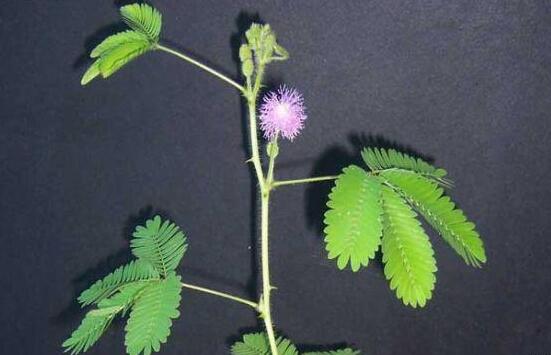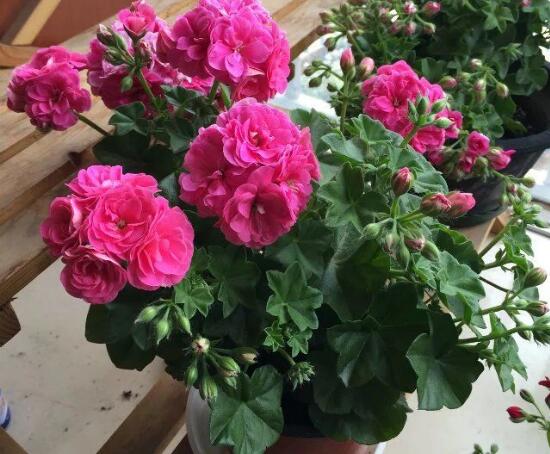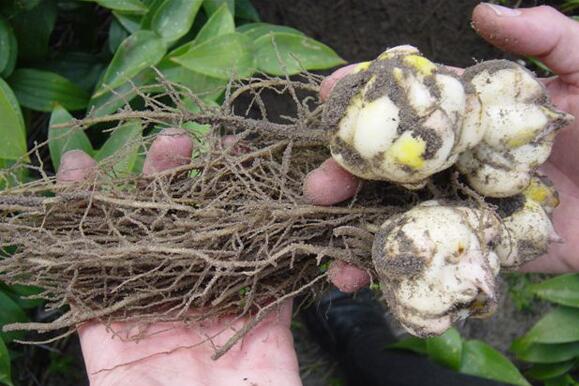When to sow mimosa, the propagation method of mimosa / sowing in March and flowering in July
Mimosa, a very strange plant, is like a spring girl. When she sees her sweetheart, she bows her head shyly and folds her leaves. In this case, she is naturally lovable. How to raise mimosa, pay attention to water and fertilizer, then how to breed mimosa? In life, the propagation method of mimosa is mainly sowing, so when will mimosa sow? Let's get to know it.
1. The propagation method of mimosa is mainly sowing.

In the propagation of flowers, we are most commonly used in cutting, ramet, etc., and sowing is rarely used. But in the propagation method of mimosa, in order to avoid transplanting root damage, there is only one that can be used by the majority of flower friends, that is, sowing and reproduction. As for how to sow mimosa and when to sow mimosa, let's move on.
Second, how to sow and propagate mimosa
1. When will mimosa be sown, from March to April
How to sow and reproduce mimosa is what many flower friends want to know, but before that, we need to know when to sow mimosa. Only when the time is right, mimosa can survive. According to the actual experience of the majority of flower friends, mimosa can be sown in spring and autumn, but it is best to sow in late March to early April, so that mimosa can blossom in July of that year.
2. Seed selection, mature and full
We should also pay attention to the seeds used in the sowing of mimosa, and we should not choose them randomly, but should choose mature, full, large, full and colorful seeds.
Note: the germination and preservation period of mimosa seeds is short. Before sowing, it should be mixed in fine sand and stored in a cool indoor place for sowing in the following spring.
3. The sowing method of mimosa
① basin soil
When the mimosa is sown, you can choose a small pot for direct seeding, or you can use a shallow pot to raise seedlings and plant separately. On the soil, the sowing soil was mixed with rotten leaf soil, garden soil and fine yellow sand at the proportion of 2:3:5. Then put the soil into a basin, smooth and compacted, sprinkle water with a spray can, and sow immediately after all the water permeates.
② sowing
The prepared mimosa seeds will be broadcast live in a small basin. In order to improve the survival rate, it is generally prepared to plant 1-2 seeds in multiple pots. If the seedlings are raised in a shallow basin, they will be sown on demand at a distance of 2 cm-2 cm.
③ sprouts in 7-10 days
After sowing, cover the soil with 3-5 cm, preferably covering the mimosa seeds. Then cover the flowerpot with plastic film to moisturize and move it to astigmatism at room temperature of about 20 ℃. After that, it will be watered as soon as it is dry, for about 7-10 days. If it survives, the mimosa seeds will basically germinate and emerge.
Management after sowing of ④
After the above sowing, the sowing and reproduction of mimosa is basically over, but the most critical link is also here, that is, the maintenance and management after sowing.
The first is light: after the mimosa emerges, take off the plastic film and let it gradually receive sunlight. When the seedlings grow to 3 cm high, the seedlings will be divided and transplanted. After watering the seedlings in the pot, put them in a semi-shaded place, wait for the seedlings to slow down, and then move to a sunny place.
The second is water and fertilizer: in the south in mid-April or early May in the north, we can move the seedling basin out of the outdoor culture, and timely watering often keep the basin soil moist. When the seedlings grew to 4 leaves, they began to apply liquid fertilizer: top dressing for 7-10 days, once maturing light liquid fertilizer. After the mimosa seedlings grow up, you can change the basin again: 15cm to 20cm.
How to plant mimosa seeds and when to plant mimosa
Mimosa is a kind of plant introduced from abroad in China, which is very common in the market at present. Mimosa is a plant that integrates ornamental and medicinal properties. At present, many people like to plant it. However, before planting, most people must be more concerned about its planting technology.
How to plant mimosa seeds
1. First of all, put an appropriate amount of soil in the sowing container, usually 7 to 8 minutes full, to keep the soil loose.
2. Then pour water thoroughly, sow the seeds, and sprinkle a thin layer of soil on top of the seeds. You don't need to be too thick to see the seeds.
3. After that, the soil should be kept moist and shaded properly, and the temperature should be kept at 15 ℃ to 20 ℃. Seedlings can emerge in about 15 to 20 days.
4. After the seeds of mimosa sprouted, keep dry and wet, and gradually enhance the light, wait until the plant grew 5 to 6 true leaves, transplanting can be. The flowerpot chooses the pot of caliber 15cm, and the soil chooses loose and fertile one. After that, pay attention to keeping plenty of light.
When will mimosa be planted?
Mimosa can be planted in both spring and autumn and should be soaked in warm water of 35-40 ℃ for one day before planting. The pot soil should be mixed with rotten leaf soil, garden soil and fine yellow sand. Add an appropriate amount of culture soil to the basin soil, flatten the surface of the basin soil, then sprinkle the water thoroughly with a spray can, and wait for all the water to seep down. The germination rate of it is still very high. When sowing, the suitable temperature for germination is between 15 ℃ and 20 ℃, and it usually takes 12 to 15 days to germinate. After germination, the suitable temperature for growth is between 15 ℃ and 25 ℃.
What if the mimosa withered?
1. Seed selection of mimosa. When selecting seeds, we should choose seeds that are free of diseases and insect pests. Healthy seeds can greatly reduce the occurrence of wilt.
2. Pruning mimosa. Secondly, we should pay attention to pruning diseased leaves, when the litter of mimosa should be cut off in time, and focus on cleaning and destruction. In particular, potted mimosa is more likely to wilt improperly, so it is necessary to strengthen the daily management.
3. Mimosa soil. The choice of soil is to use fertile, well-drained loam. Do not water too much to prevent withering and yellowing caused by stagnant water in the basin. In the process of fertilization and cultivation of mimosa, attention should be paid to the application of compound organic fertilizer containing nitrogen, phosphorus and potassium, which can help mimosa grow healthily and improve its resistance and viability. The distance between the mimosa plant and the potted mimosa should not be too close, and the good density condition is beneficial to the ventilation and light transmission of the plant, reduce the leaf humidity, and thus reduce the occurrence of diseases.
What if the mimosa doesn't blossom?
In the cultivation of mimosa, it sometimes does not blossom, the main reason for this may be inappropriate lighting. In addition, it may be due to the lack of nutrients. Because the plant does not have enough fertilizer, it is not enough to blossom.
1. First of all, it is necessary to give the mimosa proper light when it is cultivated. According to the growth habits of mimosa, mimosa needs to be given short sunshine in order to make it blossom. Therefore, you can manually adjust the sunshine time, do 8 hours of short-day treatment.
2. The second is to have suitable nutrients. In order to prevent the mimosa from blooming because of the lack of nutrients, the growth needs of the mimosa must be met during the culture period, and attention should be paid not to excessive fertilization so as to avoid excessive plant growth.
In fact, the planting technology of mimosa seeds is relatively simple, the first thing is to do a good job of seed selection, and then choose an appropriate time to plant. In the process of planting, it is necessary to strengthen the management of soil, water and fertilizer. Mimosa grows well only when every step is done.
Propagation methods of Mimosa Culture techniques of Mimosa
Due to the tenacious growth of mimosa, mimosa is regarded as a weed in many countries. But many people still want to cultivate mimosa. Today, I would like to share with you the breeding methods and breeding skills of mimosa.
Basic information about mimosa:
Mimosa is a perennial herb or subshrub of Leguminosae, which is named mimosa because its leaves respond to heat and light and close immediately when touched by external forces. Native to tropical South America, it likes to be warm and humid, and is not strict with the soil. The flower is pink, shaped like a fluffy ball, delightful. Pods bear fruit after flowering, and the fruit is flat and round. The leaves are feathery and compound leaves are alternate and arranged in palms. The flowers, leaves and pods of mimosa have better ornamental effect, and are easy to survive, so they are suitable for balcony, indoor potted flowers, and can also be planted in the courtyard. Mimosa is different from other plants. When touched by the outside world, the petiole is drooping and the small leaves are closed. This action is understood as "shy", so it is called mimosa, mimosa, and ugly grass.
Propagation methods of mimosa:
Sowing and propagating with seeds can be sowed in both spring and autumn. Before sowing, the seeds can be soaked in warm water of 35 ℃ for 24 hours, sowed in shallow pots, covered with soil of 1cm and 2cm, fed with water by soaking method and kept moist. Under the condition of 15-20 ℃, the seedlings emerged after 7-10 days, and the seedlings were put on the pot when the seedlings were 5 cm high. The strong mother plant was selected when the seed was collected, and the management was strengthened. In the fruiting period, the pods were picked along with ripening, and the pods would crack automatically when they were ripe.
The pod is flat, 1.2 cm long and 0.4 cm wide, with bristles on the margin, with 3 pods and 4 pods, with 1 seed per pod node and deciduous internodes at maturity. The florescence is September.
Culture skills of mimosa:
1. Soil: mimosa has strong adaptability and lax requirements on soil, grows well in moist and fertile soil, and sows in the culture soil mixed with 2 parts of rotten leaf soil, 3 parts of garden soil and 5 parts of fine yellow sand.
2. Watering: mimosa likes to be wet and watered once a day during the summer growing season.
3. Sunshine: mimosa likes plenty of light and is slightly resistant to semi-shade.
4. Temperature: mimosa, as a potted ornamental flower, should be moved into the sunny place indoors in winter and can survive the winter safely at room temperature of 10-12 ℃.
5. Fertilization: mimosa does not need much fertilizer during its growing period, so you can apply dilute liquid fertilizer for 2-3 times, do not grow in vain, because mimosa is mainly used as an interesting foliage flower, small is better.
- Prev

How to propagate geraniums, propagation methods / cutting / sowing / tissue propagation of geraniums
Geranium is a very ornamental plant, which can be seen in many gardens in China, and it is also the most beautiful moment when it blossoms. Of course, wanting it to bloom into beautiful flowers has a lot to do with the process of reproduction. About how geraniums reproduce.
- Next

How to reproduce lilies? the four propagation methods / sowing and reproduction of lilies have a high survival rate.
Lily, one of the famous flowers in China, has beautiful shape, elegant posture and rich colors. It is potted at home by many flower friends. But is a pot of lilies too monotonous? it's time to breed several pots and raise them together. How do lilies reproduce? According to the inquiry, the breeding methods of lilies are sexual and asexual.
Related
- Fuxing push coffee new agricultural production and marketing class: lack of small-scale processing plants
- Jujube rice field leisure farm deep ploughing Yilan for five years to create a space for organic food and play
- Nongyu Farm-A trial of organic papaya for brave women with advanced technology
- Four points for attention in the prevention and control of diseases and insect pests of edible fungi
- How to add nutrient solution to Edible Fungi
- Is there any good way to control edible fungus mites?
- Open Inoculation Technology of Edible Fungi
- Is there any clever way to use fertilizer for edible fungus in winter?
- What agents are used to kill the pathogens of edible fungi in the mushroom shed?
- Rapid drying of Edible Fungi

